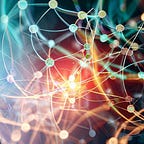What is complexity?
Biological systems are not only complex, they become more and more complex, both in the course of phylogeny and ontogeny. The reason for this is that, on average, the exchange of energy with the environment has a positive balance. The resulting net growth is not only quantitative, but it also leads to an increase in differentiation phylogenetically.
Now, a mere net increase in complexity is not necessarily conducive to the survival of a species, because complexity and differentiation mean higher vulnerability to the system. But why is it still possible to observe a higher performance of more complex systems?
The answer is: complexity reduction. This is often mistakenly associated with loss of information [1]. The opposite is the case, because reduction in the realm of the living means that functions and structures are combined, i.e. information is compressed and thus gives rise to what is otherwise often referred to as emergence.
The reduction of complexity is an increase in effectiveness and not only a bundling of information, but its increase. If the complexity of 1+1+1+1+1+1+1+1+1+1+1+1 is reduced to 10x1, the information has increased in relation to the effort in the form of the number of characters as a relative value. This allows more information to be stored in the same amount of information carriers.
This is precisely the effect of abstract thinking. Assimilated contents are summarized in a coarse-grained manner and form a metastructure [2] that contains the same information in a condensed form. Piaget referred to this process in another context as accommodation [3].
The reduction of complexity in biological systems therefore means the enrichment with information. However, it would be one-sided to conclude from this that life has invented neural information processing as the most effective form of information processing to date. It seems plausible that information density forms a hotspot and thus tends towards centralization. It is possible that the power law applies here [4]. It is therefore not surprising that a network of sensors has formed here that brings everything together in one central office.
If we assume that the regulatory levels created in phylogeny (genome, cell, cell group, organs, CNS) overlap, a multidimensional complexity arises, in which each regulatory level retains its modality, but is integrated into the overall system with the others.
This integration also plays a role in the brain, which is why a purely schematic description of cognitive processes, such as that proposed by the concept of predictive coding, is problematic. Here, a machine learning program is superimposed on the reality of biological systems.
If we assume that information or structure tends to form local densities, and thus local centers, then it is obvious that these thoughts cause action. These structural densities would therefore be the patterns that become visible in the scanner. By triggering thought or action processes, they have causal power. They are created by internal and external impulses.
It should be emphasized at this point that there is only one process. And this can be described both physiologically and psychologically. However you describe it, it’s always one and the same process.
If we further assume that many such patterns contribute to the formation of superordinate patterns, i.e. metastructures, and that these in turn form a superssystem, we would have described a controlling complex, which is commonly referred to as the ME.
If this is a scale-free process, it means that all living things form such a controlling ‘core’ that ‘directs’ the system. This would not be a physical description of the biological system, but an ontological one.
Conclusion: Living organisms form controlling structures as an aggregation of information in the course of the reduction of complexity. This is a logical explanation of self-organization rather than a merely phenomenological one.
— — — — — — — — — — — — — —
[1] Luhmann,N., Soziologische Aufklärung 2, Aufsätze zur Theorie der Gesellschaft, 1991, S. 205
[2] Stegemann,W. Consciousness as metastructures, https://medium.com/@drwolfgangstegemann/consciousness-as-metastructures-36ae906c36fa
[3] Piaget,J., Meine Theorie der geistigen Entwicklung, 1983
[4] Evans, A.R., Pollock, T.I., Cleuren, S.G.C. et al. A universal power law for modelling the growth and form of teeth, claws, horns, thorns, beaks, and shells. BMC Biol 19, 58 (2021). https://doi.org/10.1186/s12915-021-00990-w
